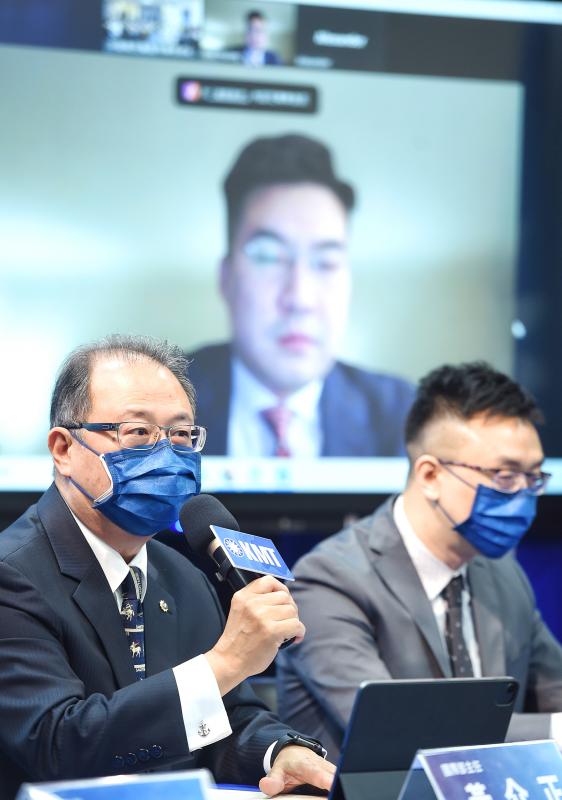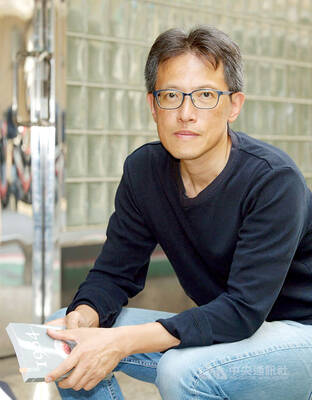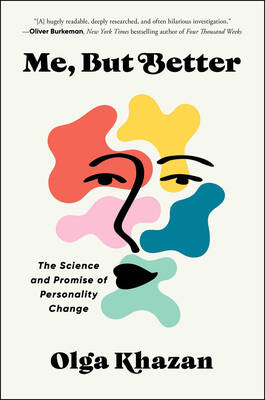This week Chinese Nationalist Party (KMT) members Alexander Huang (黃介正), its Director of International Affairs, Eric Huang (黃裕鈞), the party’s Washington representative and Johnny Chiang (江啟臣), former party chairman, teleconferenced at Columbia University for “Cross-Strait and US-Taiwan Relations from the [KMT] Point of View.” The teleconference was stimulated by the recent move by the KMT to re-open its offices in Washington, closed for the past 13 years.
This move to resume a presence in the US capital was apparently sparked by Eric Chu (朱立倫), the current party chair. During the KMT chairmanship election, Chu was criticized by more rightist candidates such as Sun Yat-sen School president Chang Ya-chung (張亞中) for being too pro-US. Chu, who has both a masters and a PhD (accounting) from New York University and taught at City University of New York, has old connections to the US.
‘1992 CONSENSUS’ FANTASY LIVES ON

Photo: Liu Hsin-de, Taipei Times
The KMT’s decision to try and fix its relations with Washington has triggered a flurry of speculation about what its policies might be and how it might do that. It is hard to see how it can make much headway inside the Beltway: the Washington of 2022 is not the Washington of 2008. Yet the its policies remain, mummified like Ice Age mammals exhumed from a California tar pit.
The most recent party platform declares that the KMT will promote the “1992 Consensus” and seek “common ground while respecting differences.” Though not widely reported in the English-language media, the platform even includes a nod to the five-point vision articulated at the meeting of then-KMT party chair Lien Chan (連戰) and Chinese leader Hu Jin-tao (胡錦濤) back in the late Neolithic period of 2005. The first of those points is mutual adherence to — what else? — the 1992 Consensus.
It explicitly states that these were the policies followed under President Ma Ying-jeou (馬英九), demonstrating the long shadow that Ma casts over the party. These items were also in the 2017 party platform, a political generation and one presidential election defeat ago.
Surveys show that the public rejects the 1992 Consensus. Further, in 2019 Chinese leader Xi Jinping (習近平 ) said in his famous speech of Jan. 2 that Taiwan would have to accept the 1992 Consensus and that, after annexation, the “one-country, two-systems” approach could be implemented in Taiwan. Because Xi refused to accept the KMT’s later-invented codicil that the 1992 Consensus included “one country, two interpretations” and insists that the 1992 Consensus means Taiwan is part of China (in 2016 Beijing sent down word that Chinese media could not mention the KMT’s codicil), analysts widely held that the 1992 Consensus was DOA.
Yet, there was Huang discussing it at the teleconference, as if it could form the basis of anything other than KMT fantasies. That was consistent with KMT policy: in April of last year party representatives met with an unofficial US delegation. When asked about its China policy, KMT representatives reiterated the 1992 Consensus and said they would not accept any form of “one country, two systems.”
Apparently the mummification process for KMT policy has faithfully replicated the ancient Egyptian procedure: it has pulled the party’s brains out through its nose.
OLD VINEGAR, NEW BOTTLES
The platform is interesting for what it calls for and what it doesn’t. The KMT’s platform calls for joining regional trade agreements and free trade agreements, and restarting the negotiations with China for the follow-on agreements to the Economic Cooperation Framework Agreement (ECFA). Apparently one Sunflower movement wasn’t enough for the party. Notably, it talks about crypto and blockchain — conservative parties seldom object to new technology.
But Taiwan’s neighbors other than China? No mention of the Philippines, Vietnam, South Korea or a Japan policy (except a throwaway line calling for trade agreement). Nada on southeast Asian or Indian policy, despite the growing Taiwanese connections with those areas.
Hong Kong, that terrifying counterpart to a free and unoccupied Taiwan, is passed over in silence. The KMT remains tunnel-visioned on China.
Since communication of the KMT story will be important in re-establishing its official presence in the US and its media ecology, naturally the KMT English News Web site was shuttered in 2020 and hasn’t re-opened since.
Meanwhile, in the US things have changed dramatically since the days when the specter of Mad Chen (“he could declare independence at any time!”) rattled its chains in the darkened manor of US-Taiwan relations and media representations of former president Chen Shui-bian (陳水扁). The KMT is not the ruling party and does not even have a majority in the legislature. There are now other parties competing with it, and in a few years, they too will be sprouting party representative offices in Washington and, if they have any brains, Tokyo.
Among both the public at large and US policymakers, views of China are considerably less naive than they were in the Ma years. Since China has a wide range of contacts with the US, there is no intermediary or mediating role for the KMT. It probably also lacks the funds to support politics the old-fashioned way, with quiet donations to US politicians. Anyone who has ever heard “high class Mainlanders” talk about the US has been exposed to the deeply ingrained chauvinistic anti-US views held by many in the KMT. Now Americans will once again be exposed to them.
In the US media and institutional fora, the KMT confronts representation of Taiwan that is highly welcomed in the US, along with well-established pro-democracy organizations on Capitol Hill such as the Formosan Association for Public Affairs (FAPA). Thanks to China’s treatment of the international media, Taiwan’s story is now resounding throughout the world. Given all this, it is hard to understand how the KMT will be anything other than an afterthought in Washington.
Good!
In a recent piece in Commonwealth Magazine Eric Huang, the new US party representative, said that the KMT would be able to explain, and the US would see, that it isn’t pro-China.
It will be interesting to see how he accomplishes that, since the party has been unable to do that with the people of Taiwan.
Notes from Central Taiwan is a column written by long-term resident Michael Turton, who provides incisive commentary informed by three decades of living in and writing about his adoptive country. The views expressed here are his own.

Last week, the the National Immigration Agency (NIA) told the legislature that more than 10,000 naturalized Taiwanese citizens from the People’s Republic of China (PRC) risked having their citizenship revoked if they failed to provide proof that they had renounced their Chinese household registration within the next three months. Renunciation is required under the Act Governing Relations Between the People of the Taiwan Area and the Mainland Area (臺灣地區與大陸地區人民關係條例), as amended in 2004, though it was only a legal requirement after 2000. Prior to that, it had been only an administrative requirement since the Nationality Act (國籍法) was established in

Three big changes have transformed the landscape of Taiwan’s local patronage factions: Increasing Democratic Progressive Party (DPP) involvement, rising new factions and the Chinese Nationalist Party’s (KMT) significantly weakened control. GREEN FACTIONS It is said that “south of the Zhuoshui River (濁水溪), there is no blue-green divide,” meaning that from Yunlin County south there is no difference between KMT and DPP politicians. This is not always true, but there is more than a grain of truth to it. Traditionally, DPP factions are viewed as national entities, with their primary function to secure plum positions in the party and government. This is not unusual

More than 75 years after the publication of Nineteen Eighty-Four, the Orwellian phrase “Big Brother is watching you” has become so familiar to most of the Taiwanese public that even those who haven’t read the novel recognize it. That phrase has now been given a new look by amateur translator Tsiu Ing-sing (周盈成), who recently completed the first full Taiwanese translation of George Orwell’s dystopian classic. Tsiu — who completed the nearly 160,000-word project in his spare time over four years — said his goal was to “prove it possible” that foreign literature could be rendered in Taiwanese. The translation is part of

The other day, a friend decided to playfully name our individual roles within the group: planner, emotional support, and so on. I was the fault-finder — or, as she put it, “the grumpy teenager” — who points out problems, but doesn’t suggest alternatives. She was only kidding around, but she struck at an insecurity I have: that I’m unacceptably, intolerably negative. My first instinct is to stress-test ideas for potential flaws. This critical tendency serves me well professionally, and feels true to who I am. If I don’t enjoy a film, for example, I don’t swallow my opinion. But I sometimes worry